Siemens washing machine does not spin clothes
 Any automatic washing machine, be it Samsung or Siemens, is valued for its comprehensive washing: throw dirty clothes into the drum, start the cycle and take out semi-dry laundry. If the Siemens machine does not spin, the tank is full of water, and the things, although clean, are wet, the problem needs to be solved urgently. Without timely diagnostics and repairs, you can lose your “home assistant” forever, so read the article and correct the situation yourself.
Any automatic washing machine, be it Samsung or Siemens, is valued for its comprehensive washing: throw dirty clothes into the drum, start the cycle and take out semi-dry laundry. If the Siemens machine does not spin, the tank is full of water, and the things, although clean, are wet, the problem needs to be solved urgently. Without timely diagnostics and repairs, you can lose your “home assistant” forever, so read the article and correct the situation yourself.
Why does this happen?
The pump, the motor, and the control board can present a “surprise” with insufficient rotation of the drum and inadequate drainage. Before looking for and fixing the breakdown, it is better to check once again whether the “diagnosis” was correct. Thus, the lack of spin is manifested by things that are obvious to the naked eye:
- water remains in the tank even after the cycle is completed;
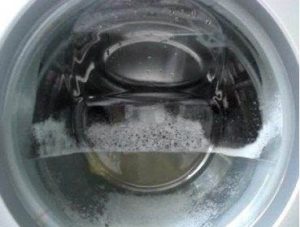
- the drain does not work;
- items removed are unusually wet;
- the drain is too noisy;
- the cycle increases due to the very slow waste of water;
- the machine “resets” the mode several times on its own;
- The "Spin" button is not activated.
- The machine makes a hum characteristic of a push-up, but the laundry is still not wrung out.
Any of the listed signs indicates a problem with the electric motor and drain. With such problems, the washing machine is not able to operate at maximum speed. The reasons for switching to a gentle mode can be a variety of details.
- Pump and drain system as a whole. Most often, the remaining water in the drum is due to a non-functioning drain due to a clog or a broken pump.
- Pressostat.When the water level sensor is faulty, the electronic control board does not detect the presence of water in the tank and does not start draining.
- Control module. Unable to send tank-draining commands and a broken module or triacs burnt out due to a short circuit. Each triac is “responsible” for a specific part of the machine and lack of communication leads to failures.
- Electric motor. Another reason is a problem with the washing machine’s engine, which does not allow the drum to accelerate for high-quality spinning at the given power. The intensity of rotation is limited by worn electric brushes or overheated wiring. If the problem is worse and the motor is damaged, the machine will not turn on at all.
- Tachogenerator. The sensor that controls the number of engine revolutions also prevents spinning. If the tachogenerator fails, the board does not receive a signal about the acceleration force of the motor and blocks it to avoid overloads.
Many different problems can lead to wet clothes in the drum, but you should not put up with remaining water, wring out the laundry by hand, or purchase a separate centrifuge. It’s easier and faster to contact the service center employees, and cheaper to deal with the problem yourself. It is only necessary to conduct a thorough diagnosis and identify the main problem.
Diagnostics step by step
Even if you regularly find unwrung items in the tank, you cannot immediately disassemble the machine to the pump. Often the spin cycle does not work without serious malfunctions in the machine. So first we check:
- was there any accidental cancellation of the mode; if the washing machine does not have a child lock on the panel, then you can change the program or switch to soaking by accident;
- If a delicate wash is not selected, in the gentle mode the spin cycle is excluded from the cycle for gentle care of the fabric.
Important! It is recommended to run the test cycle again, selecting the standard mode and adjusting the number of revolutions.
- is the laundry wrinkled? Not all washing machines are equipped with an imbalance control function, and if the laundry is unevenly distributed over the surface of the drum, lumps appear and the desired balance is disrupted. To avoid serious damage, the system automatically stops the cycle. In this case, it is necessary to remove excess items or distribute them along the walls.
There are no other reasonable explanations for the spin cycle not working on the Siemens machine. If after the checks the situation has not changed, we begin diagnostics. Its sequence depends on the nature of the problem. Step-by-step instructions for each possible option are provided below.
Water remains in the tank
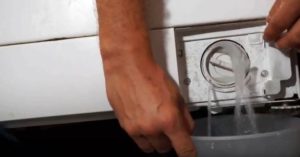 Most often, a non-working spin makes itself felt by the water remaining in the drum. This “symptom” clearly indicates problems in the drain. To fix the problem, you need to carefully check each element of the drain system.
Most often, a non-working spin makes itself felt by the water remaining in the drum. This “symptom” clearly indicates problems in the drain. To fix the problem, you need to carefully check each element of the drain system.
- We find a drain hatch in the lower right corner of the body.
- Unlock the retaining latches by prying the cover open with a flat-head screwdriver.
- We lay rags and place a bucket.
- We take out the garbage filter.
Be prepared for water to pour onto the floor.
- We check the functionality of the pump by running the spin or drain mode. Ideally, the pump impeller should rotate strongly - then the system works perfectly.
A static impeller indicates problems with the pump - a clogged, jammed or burnt-out mechanism. Disassembling the part will help clarify the extent of the problem. To do this, loosen the clamp on the connected pipe, disconnect it and the existing wiring from the housing. We disassemble the pump and carefully inspect the internal surface.It is likely that a clog made of hair, dirt or wool is slowing down the drain. After cleaning, we return everything to its place, start the spin cycle and illuminate the “impeller” with a flashlight. Rotation signals that the breakdown has been repaired, and its absence requires a complete replacement of the pump.
Inhibits the draining of the tank and disturbances in the operation of the pressure switch. It is “responsible” for timely draining, giving a signal to the system about the water level in the drum. To test it you need:
- drain the water through the filter using the previously described method;
- wait for the hatch door to unlock and unload the laundry;
- unscrew the two screws located at the top of the rear wall;
- pull the top cover towards you and remove it;
- find the pressure switch near the wall;
- disconnect the pipes and check for blockages.
Next, carefully inspect the contacts and the integrity of the wiring. If there are no obvious suspicions, we do a final test using a multimeter. To do this, we apply probes to the corresponding connectors and evaluate the results. It is normal for the readings to fluctuate, and if there are no sharp jumps in the numbers, you will have to install a new sensor.
Washes but doesn't spin
 If at the end of the cycle there is no water left in the tank, but the laundry is still wet, you will have to look for the problem in the motor. If the engine is faulty, spinning is impossible or takes place at minimum speed, which is not enough to fully dry things. It is not difficult to prove that the washing machine has stopped spinning clothes due to insufficient rotation. Unscrew the screws on the back cover and remove the panel.
If at the end of the cycle there is no water left in the tank, but the laundry is still wet, you will have to look for the problem in the motor. If the engine is faulty, spinning is impossible or takes place at minimum speed, which is not enough to fully dry things. It is not difficult to prove that the washing machine has stopped spinning clothes due to insufficient rotation. Unscrew the screws on the back cover and remove the panel.
- Pull off the drive belt.
- Loosen the bolts holding the motor and remove the engine.
- Pay attention to the brushes installed on both sides of the body. We remove them from the grooves, take them out of the cases and measure the length of the carbon tips.If the result is less than 0.7 mm, we replace it with new ones.
- We check the integrity of the wiring.
- We call the coils with a multimeter. If there is no resistance or voltage, you will have to install a new engine.

The tachogenerator, also called the Hall sensor, is often to blame for poor drum spinning. When broken or burned out, it no longer controls engine speed and the system loses control over shaft rotation. In this case, the required speed does not develop and the laundry does not have time to wring out. We check the guess this way: we find the device on the motor housing and measure it with a multimeter.
The machine freezes during the spin cycle
Less often, a problem occurs with the “brain” of the washing machine – the control module. In this situation, the machine begins to work unpredictably: it “forgets” to rinse the laundry, cancels the spin cycle, or simply freezes in the middle of the cycle.
It is not recommended to repair the board yourself, since one careless movement will aggravate the situation until it breaks down beyond repair.
You can only visually assess the condition of the module. To do this, disconnect the machine from the power supply, remove the top cover, pull the powder receptacle towards you and carefully unscrew the screws holding the front panel. We release the wiring and look for visible damage on the surface of the board. If there are none, contact the service center.
Useful tips for using the machine
In order not to look for instructions on what to do when the spin cycle is not working, it is necessary not to bring the situation to a disastrous end. It’s easy to prevent problems with the motor and drainage by following the basic rules for operating the machine.. Let's outline these rules.
- Carefully inspect pockets for heavy and metal objects.
- Sort things before loading.
- Do not exceed the maximum laundry load.
- Install and connect the machine to communications according to the user manual.
- Do not forget to regularly rinse the washing machine, starting the “empty” mode after finishing work.
- Leave the door open after each wash.
The sooner problems with spinning are noticed, the sooner and cheaper the problem will be solved. The main thing is to remember safety precautions and, if you have the slightest doubt, contact specialized repair centers.
Interesting:
Reader comments
- Share your opinion - leave a comment

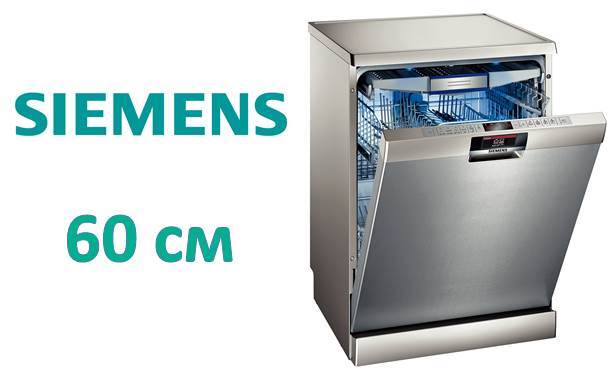
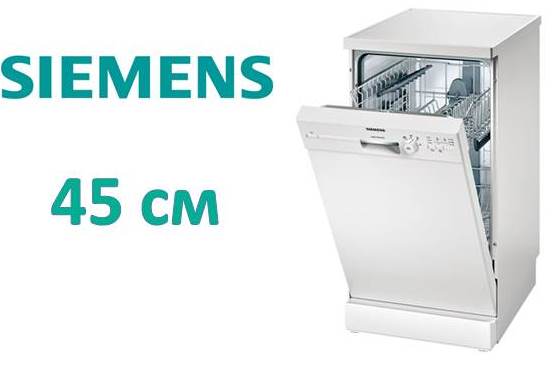


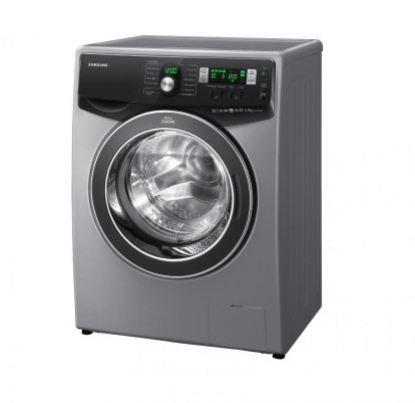















Add a comment